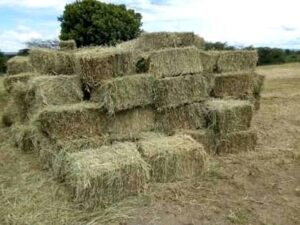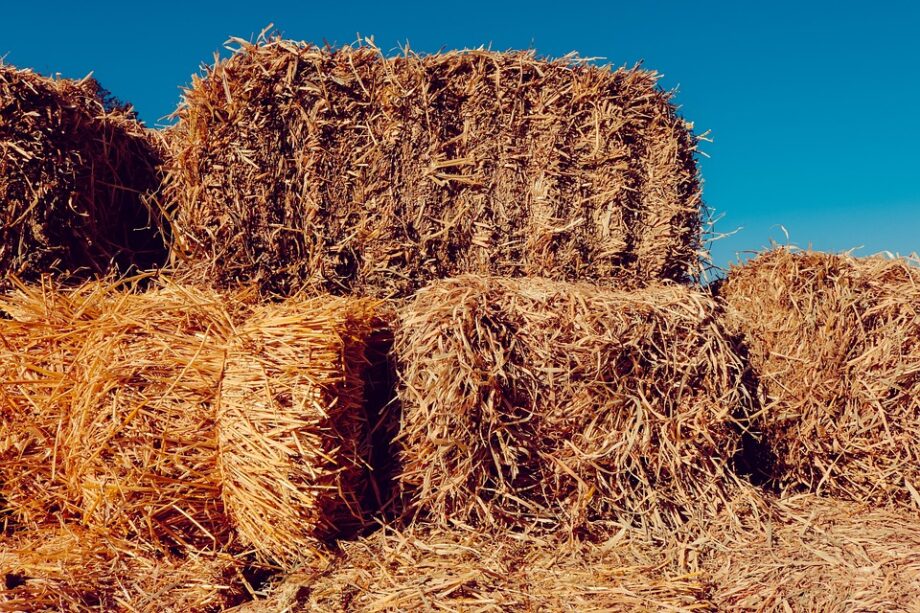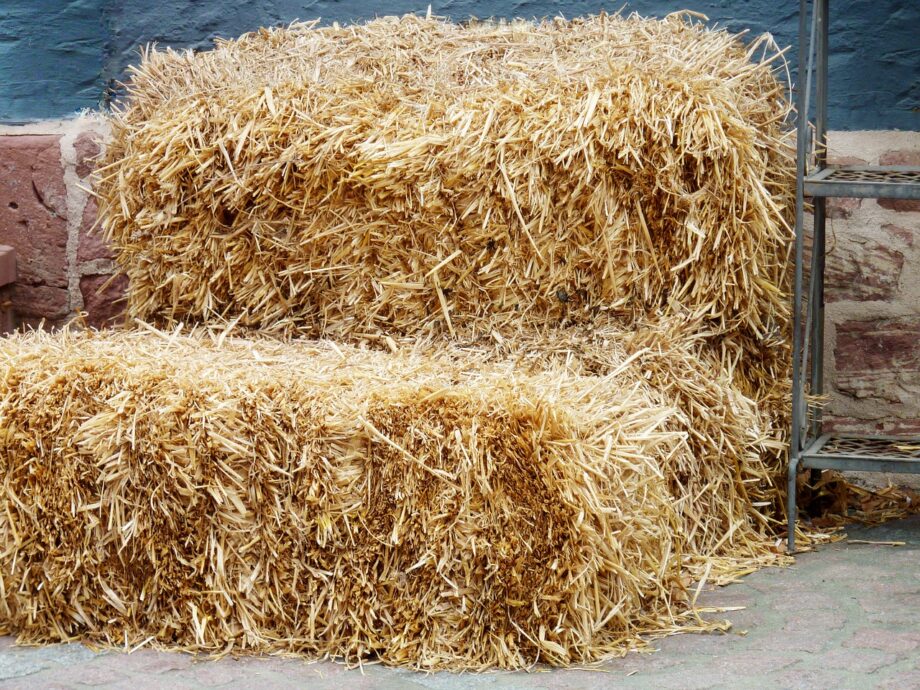Hay grass in Kenya is an essential crop for livestock farmers in Kenya. It is a type of grass that is grown and harvested specifically for its dry matter.
In Kenya, hay grass is mainly used as animal feed, and it provides a good source of nutrition for livestock, especially during the dry season when pasture is scarce. It is rich in fiber, protein, and other nutrients that are essential for the growth and development of animals.
The hay grass is mainly grown in the highlands and also tropicals of Kenya, where the climate is favorable for its growth.
Hay grass farming has become increasingly popular in Kenya in recent years, as more farmers realize the importance of providing their livestock with high-quality feed.
The government has also been promoting hay grass farming as a way to boost livestock productivity and reduce the country’s reliance on imported animal feeds.
What Kind Of Grass Makes The Best Hay?
Several types of grasses make good hay, but the best type of grass for haymaking depends on various factors such as the location, climate, soil type, and intended use.
1. One of the most commonly grown hay grass varieties in Kenya is Boma Rhodes grass. Boma Rhodes grass is a hybrid variety of Rhodes grass that was developed specifically for hay production and is known for its high yield and good quality forage.

Napier grass (also known as elephant grass), is a tall and fast-growing grass species. Other hay grass varieties that are grown in Kenya include Rhodes grass.
Napier grass remains the most widely used grass for haymaking in Kenya due to its high yield, palatability, and adaptability to a wide range of soil and climatic conditions.
In general, the best type of grass for haymaking depends on the intended use and the specific needs of the livestock being fed. Farmers often experiment with different grasses to find the ones that work best for their particular situation.
Hay grass is typically grown in rows and can be harvested using a variety of techniques, including hand-cutting, mowing, or using a forage harvester. Once harvested, the grass is then dried and baled, which makes it easier to store and transport.
Challenges Associated With Hay Farming
However, hay grass farming in Kenya is not without its challenges. One of the biggest challenges is the high cost of production, which can make it difficult for small-scale farmers to grow and sell hay grass profitably.
Secondly, pests and diseases can also affect hay grass yields, which can lead to losses for farmers.
Despite these challenges, hay grass remains an important crop for livestock farmers in Kenya. With the right management practices and support, hay grass farming can be a profitable venture that can help to improve the livelihoods of farmers and contribute to the country’s food security.
Where To Buy Hay Grass In Kenya
There are several places where you can buy hay grass in Kenya. Some options to consider include the following:
- Agricultural supply stores: Many agricultural supply stores in Kenya sell hay grass seeds, as well as the equipment and tools needed for hay grass farming. Some of the popular stores include Amiran Kenya, Yara East Africa, and Elgon Kenya.
- Online marketplaces: You can also find hay grass seeds and bales for sale on online marketplaces such as mintgrassdealers.co.ke, Jumia, Kilimo Market, and AgroAfrica. These platforms allow you to compare prices and find the best deals on hay grass products.
- Hay dealers: Another option is to buy hay grass bales directly from hay dealers. These dealers can be found in many parts of the country and often offer delivery services. Some of the popular hay dealers in Kenya include Kenya Hay Company and Kiambu Hay Supplies.
- Farmers’ cooperatives: Farmers’ cooperatives are another potential source of hay grass in Kenya. These organizations often work with small-scale farmers to produce and sell hay grass bales. You can search for local farmers’ cooperatives in your area or contact the Kenya Farmers Association for assistance.
When buying hay grass in Kenya, it’s important to ensure that the product is of high quality and free from pests and diseases. You should also compare prices and consider factors such as delivery options, payment methods, and customer reviews before making a purchase.
Alfalfa Hay For Sale In Kenya
If you are looking for alfalfa hay for sale in Kenya, there are a few options to consider:
- Agricultural supply stores: Some agricultural supply stores in Kenya may sell alfalfa hay or alfalfa seeds. It is worth checking with stores like Amiran Kenya, Yara East Africa, and Elgon Kenya to see if they have any alfalfa hay available.
- Online marketplaces: You can also find alfalfa hay for sale on online marketplaces such as mintgrassdealers. co.ke, Jumia, Kilimo Market, and AgroAfrica. These platforms allow you to compare prices and find the best deals on alfalfa hay products.
- Hay dealers: You can also try contacting hay dealers in Kenya to see if they have any alfalfa hay available. Some popular hay dealers in Kenya include Kenya Hay Company and Kiambu Hay Supplies. They may have connections to farmers who grow alfalfa and can provide you with bales of alfalfa hay.
- Livestock feed suppliers: Some livestock feed suppliers in Kenya may also sell alfalfa hay as part of their product offerings. It is worth checking with suppliers like Premier Feeds and Elgon Kenya to see if they have any alfalfa hay available.
How Much Is Hay Grass In Kenya?
The price of hay grass in Kenya can vary depending on a number of factors such as the region, availability, and quality.
However, on average, a bale of hay grass in Kenya can cost between Ksh 150 to Ksh 300 (approximately USD 1.50 to USD 3.00). It is important to note that prices may fluctuate depending on the season and location, so it is best to check with local suppliers for current pricing.
How Long Does Hay Take To Grow In Kenya?
The time taken for hay to grow in Kenya depends on various factors such as the type of grass being grown, the climate and weather conditions, and the farming practices employed.
In general, hay can take anywhere from 60 to 90 days to grow, from the time it is planted to when it is ready for harvest. However, some types of grasses may take longer to grow, while others may grow more quickly.
In addition to the time it takes for hay to grow, it is important to note that hay requires proper care and management to ensure it grows well and is of good quality. This includes regular watering, fertilization, and pest control, as well as proper timing of harvest and storage.
Is Hay Farming Profitable In Kenya?
Hay farming can be profitable in Kenya if done correctly and with proper management. However, profitability may vary depending on various factors such as market demand, cost of production, and yield.
One of the advantages of hay farming in Kenya is the availability of land and a suitable climate for growing various types of grasses that can be used for hay production. Additionally, there is a growing demand for hay, especially from the dairy and livestock industries.
To ensure profitability in hay farming, it is important to choose the right type of grass to grow based on market demand and suitability for the local climate and soil conditions.
Proper care and management of the crop, including regular fertilization, pest control, and timely harvesting and storage, can also help to maximize yields and quality.
It is important to note that hay farming, like any other agricultural enterprise, involves risks such as weather conditions, pest infestations, and market fluctuations. Therefore, it is advisable to conduct proper market research and seek expert advice before starting a hay farming venture in Kenya.
How Many Bales of Hay Does An Acre Produce In Kenya?
The number of bales of hay produced per acre in Kenya can vary depending on various factors such as the type of grass being grown, soil fertility, climate, and management practices.
On average, an acre of land can produce between 100 to 150 bales of hay in Kenya. For example, some high-yielding grass varieties may produce more bales per acre, while poor management practices such as inadequate fertilization or overgrazing can reduce yields.
It is also important to note that the size of bales can vary depending on the equipment used for baling. In general, bales in Kenya may range from 10 to 20 kilograms, depending on the size of the baling machine used.
Overall, it is advisable to seek expert advice on the appropriate grass varieties and management practices to ensure maximum yields and profitability in hay farming in Kenya.



Would like to plant hey grass in mwea locality in Kirinyaga County. Which is the best type to grow there